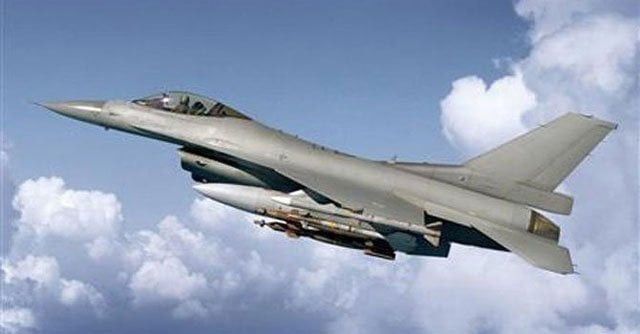Note to US: Pakistan’s insatiable appetite for F-16s
Despite its plan to induct at least 150 JF-17 Thunder, F-16s remain heart and soul of PAF's fighter squadrons

A file photo of F-16 jet. PHOTO: REUTERS
Last March, the US House Committee on Foreign Affairs blocked sale of cutter vessels worth $150 million to the Pakistan Navy on the same pretext. Defense purchases from the US have rarely been upfront commercial transactions. The White House never shies away from taking political and diplomatic mileage, thereof.
High performance
Despite its plan to induct at least 150 indigenously produced JF-17 Thunder, F-16s currently remain the heart and soul of the Pakistan Air Force’s (PAF) fighter squadrons. First acquired during the 1980s, Pakistan has 70 combat-ready fighting falcons. In 2012, the United States delivered 14 used but upgraded F-16s to the PAF. Islamabad managed to acquire older version of 13 Jordanian F-16s in 2014, which will go through a mid-life upgrade programme.
JF-17 finds buyer at Dubai Air Show: report
The formidable fighter jets set a production record of 4,550 units, sold to 26 air forces. Despite technological advances in fighter technology generation after generation, this system is the most affordable and reliable in its category. In a recent competition, F-16 outmaneuvered F35-lighten II, the most expensive fifth-generation fighter.
Along with the F-16, the PAF does eye SU-35, F-35 and F-22 Raptor besides some J series Chinese fifth-generation fighter jets. During the period of US sanctions, Pakistan eagerly pursued purchase of French Mirage 2000 and Swedish JAS 39 Gripen. The deal with the French could not go through mainly due to the high price tag while Sweden succumbed to US pressure.
The risks of continued and added reliance on F-16s are dreadful. Given the influential Indian lobby in the States, sanctions are likely to be slapped against Pakistan in case of war with its eastern neighbour. The other undermining factor will be increased presence of US officials at PAF airbases to prevent the latest version from being shared with China.
Regardless of hiccups such as the Pressler Amendment, which banned most economic and military assistance to Pakistan, and Indian opposition to the sale, F-16s continue to be every Pakistani pilot’s favorite multi-role fighter. Until the Chinese fifth-generation fighter technology matures up and becomes ready to be shared with Pakistan, the Air Force will rely on an assortment of F-16s in good numbers against India’s Su-30, MiG-29, Mirage 2000-v and Rafale jets. The F-16 is a resilient fighter jet with an excellent safety record and since PAF servicemen have a long experience in handling the machine the crew won’t need training if the jets are added up again. Induction of a new platform, on the other end, will be costly and time consuming both.
Pakistan meets JF-17 production target
Give and take
Ironically, F-16s continue to be a determinant of relations between Pakistan and the United States. Although blocking the sale of F-16s to one of the earliest users sounds absurd in Pakistan, US Congressmen believe ties between Washington and Islamabad are not warm enough for such a sensitive transaction to continue.
For Obama administration, sale of a handful of fourth-generation fighters is a means to exercise leverage over Pakistan. Islamabad has already tied itself closely to China, and to an extent Russia. It’s anybody’s guess if the Obama administration will be able to overcome the obstacles to the deal posed in the Congress for the time being.
Naveed Ahmad is a Pakistani investigative journalist and academic with extensive reporting experience in the Middle East and North Africa. He is based in Doha and Istanbul. He tweets @naveed360



















COMMENTS
Comments are moderated and generally will be posted if they are on-topic and not abusive.
For more information, please see our Comments FAQ